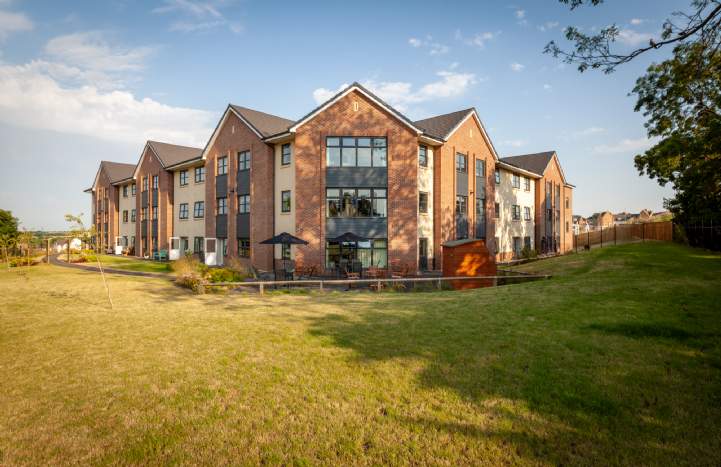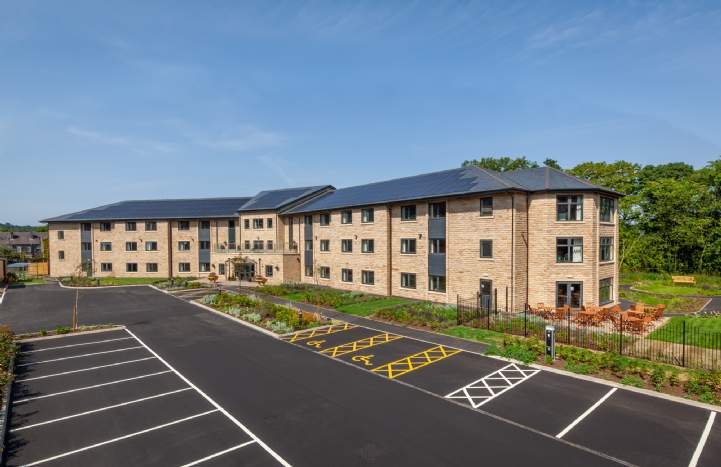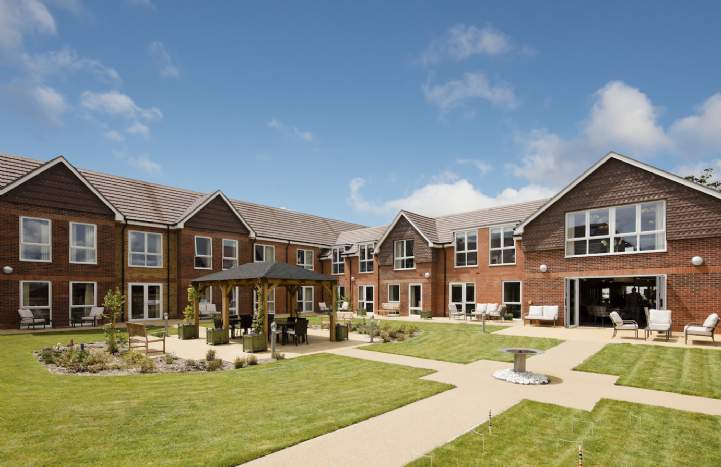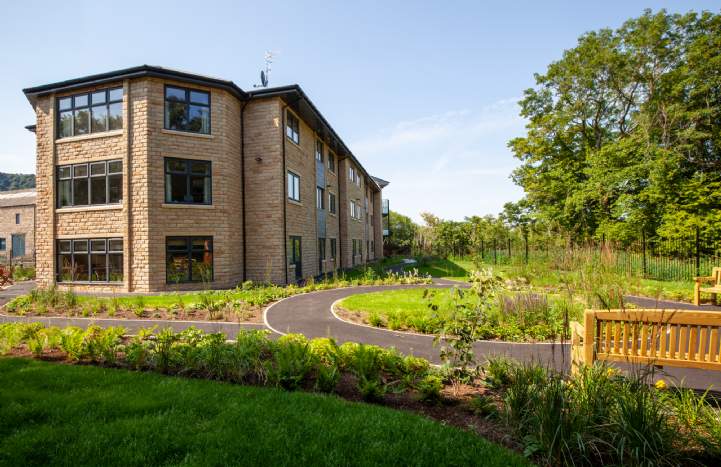The Countercyclical Asset Class?
Care Homes have proven to be a countercyclical real estate asset class, performing strongly in economic downturns. Underpinned by compelling supply / demand fundamentals and an ageing population, the European Care Home sector nevertheless has many nuances, and a close understanding of each market’s regulation, spending and cultural approach to care, is key for investors looking to access and achieve success in this sector. Although many elderly care home operators and investors have grown their market share in recent years, European care home markets remain highly fragmented.
Consolidation rates - the proportion of the market made up by the top five operators in England, France, Spain and Germany, are between 11% and 13%. Belgium is the most consolidated market with 25%. This presents opportunities for pan-European aggregators.

In common with many countries around the world, much of Europe has an increasingly ageing population. That results in more people needing increasingly complex care, and for longer periods of time.
This will underpin continued demand in the sector. The demographics are clear to see, and the problem is forecast to increase moving forward.
Firstly, an ageing population means more people will have increasingly complex care needs, and for longer periods of time, as diseases such as dementia become more prevalent.
Secondly, the old age dependency ratio, the number of people aged >65 compared to the number of working age people, is also increasing sharply – there are more older people being supported by fewer working age people. That means countries will find it harder to pay for people’s care needs.
The rate of these changes differs across Europe, however. The UK currently has the lowest old age dependency ratio and will see the lowest rate of growth in people aged >65, according to data from Oxford Economics. The UK’s old age dependency ratio will rise from 22% in 2022 to 25% in 2032. Meanwhile, Germany’s will rise from 35% to 45% over the same period. Spain and the Netherlands will see the largest growth in their elderly populations, rising by around a quarter.

Summary
- Care home markets across Europe have clear funding and regulatory differences.
- England, Italy and Spain have taxation based systems, whereas France, Germany, the Netherlands and Belgium all have insurance based models.
- Social care funded by insurance based models can be vulnerable to the changing state of the national environment, in terms of demographics and economies.
- In predominantly means-tested systems, such as England, risk is greater for the individual, with public support limited to the least wealthy.
Care home markets have clear funding and regulatory differences
Residents in need of care and national governments pay for social care in various ways. This ultimately means different approaches and outcomes for developers, investors and operators of social care real estate.
The UK, Italy and Spain have taxation based systems. All three combine funds raised through national taxation with regional/local taxation. A large proportion of long-term care funding in England is allocated to local councils by central government, however, the amount of these grants has been cut in recent years. In 2018, the IFS estimated the proportion of local taxes spent on adult social care will increase from 30% to over 50% by 2030.
Governments across the world are grappling with the challenge of ageing populations, and the increased resources that will be needed. France, Germany, the Netherlands and Belgium all have an insurance based model. In Germany, the insurance is primarily collected as a 2.25% income tax with half paid by the employer, whilst in the Netherlands, every person living or working in the country is required to purchase a basic health insurance policy.
Social care funded by insurance based systems can be vulnerable to the changing state of the national environment, however. Lower than expected insurance contributions or higher than expected long-term care needs can leave funds facing financial problems, a problem which will only be exacerbated in challenging macroeconomic conditions, such as those we’re seeing currently.
Care is provided in different ways across Europe
As a proportion of total public spending on long-term care, institutional care (i.e. care homes) makes up over 50% in every market, except in Italy where it accounts for just 28%.
The UK and France have the largest share of institutional care provision and the smallest share of cash benefits. Cash benefits give recipients greater choice, with the freedom to use cash as they see fit, such as to employ domiciliary carers or to complete home improvements, to allow people to stay in their homes for longer. Alongside Spain and Italy, cash benefits are also prominent in the German and Dutch markets.

Summary
- Germany has the largest care home sector.
- The UK has by far the largest private sector market.
- Belgium is the most consolidated market in Europe, with a few big players.
- The UK, Germany, France, Netherlands and Spain have highly fragmented markets.
- The care home market in Spain and Italy has been slower to develop, as families are more likely to care for elderly relatives at home.
The private care home market is worth €46bn across the ‘big 7’ European countries
The European elderly care home market was worth €115bn in 2022, according to Healthcare Business International. The private sector makes up 40%, equivalent to €46bn. The vast majority, €32bn (70%), is in the UK and Germany – the two biggest private care home markets.
Germany is the largest market in Europe, both in terms of value (€35.8 bn) and the number of care home beds (900,000). This is perhaps unsurprising given that it has the largest population. However, the UK’s private sector is larger; making up 82% of its total care home market (€17.8 bn) compared to Germany’s 40% (€14.3 bn). Although Germany’s percentage might seem low compared to the UK, it still makes it the next largest private market as a proportion of its total, amongst the seven largest European markets.
In the southern European countries of Italy and Spain, family members are much more likely to care for elderly relatives rather than place them in institutional care. As a result, these care home markets are smaller relative to the size of their population. This cultural difference however appears to be changing, with smaller families and fewer people per household making this more challenging. This will result in opportunities for investors as these markets are likely to increase in size.
UK care homes are smaller than their European counterparts
Germany, Italy and Spain typically have far bigger care homes than in the UK. In Germany, 42% of care homes have more than 75 beds. C. 37% of homes have more than 75 beds in Italy and Spain.
The UK has a far higher proportion of smaller care homes - just 7% have more than 75 beds. 75% have 50 beds or less. The Netherlands is closer to the UK than Germany, Italy and Spain, also having smaller sized care homes.
According to Healthcare Business International, care homes in the Netherlands are typically built with 20-25 beds, though some are now pushing 30-40.
Investors looking to acquire portfolios to build scale may therefore find opportunities harder to come by in the UK and the Netherlands.
Only Spain has seen a significant increase in the number of care home beds relative to its ageing population
The development and delivery of new care home stock has been inconsistent. The Netherlands and Belgium have the most amount of stock proportionate to people aged 65+, with the ratio between the two remaining fairly static between 2010 and 2020, according to data from the OECD.
In the UK, although around 8,000 beds have opened each year over the past decade, nearly the same number have ceased operations each year. Therefore, the total number of beds has remained static. Alongside an ageing population, the number of beds proportionate to people aged 65+ has therefore gone down. There is a similar trend in Belgium and France, albeit not to the same extent.
In Italy, where culturally it is more common for family members to care for elderly relatives, the number of care beds is now increasing at a faster rate than the ageing population. Spain, which is closer to Italy than the UK in terms of institutional vs home care arrangements, has more beds than the UK, when compared against the number of people aged over 65.
Summary
- Investment in European care homes has seen sustained growth with investment totalling €2.3bn, €3.8bn and €5.7bn in 2019, 2020 and 2021, respectively.
- Germany is by far the most liquid market, with more than €5bn transacted since 2020. The UK is a clear second with €2.5bn, followed by France and Italy with around €750m each.
- Cross border capital dominates the sector, with large players investing across Europe. As domestic markets become saturated, more investors are looking to diversify their portfolios.
Investment in European care homes continues to increase
Investment across the European care home market has been steadily rising over the past decade, reaching a record high of €5.7bn in 2021. Total annual acquisitions have averaged €2.4bn since 2012. As the major operators such as Korian and Orpea, and major landlords like Aedifica, Cofinnimo and Swiss Life, become more pan-European in their focus, so too does the investment market.
Cross-border investment dominates capital flows in European care homes
Over the 30 months between 2020 and Q2 2022, the German care home sector received the greatest volume of net capital flows, at just under €2bn. The vast majority of this was from cross-border investment at €1.6bn. At the same time, there was a €900m net loss of private investment in Germany, with many more parties exiting the sector by disposing assets for use as other real estate sectors, compared to entering it via acquisitions. It is a similar story across all other markets apart from France.
Institutional investors, REITs and listed companies are buying and holding stock. Together they invested more than €3.7bn since the start of 2020, with a net capital flow of €1.4bn.
However, this has been dwarfed by the €4.2bn invested cross-border, with net flows nearly double that of institutions and REITs/listed companies combined.
Germany has by far the most liquid market, followed by the UK
In Germany cross-border investment made up 50% of total acquisitions between 2020 and Q2 2022. Vonovia SE made close to €1.25bn of acquisitions over the last 24 months for 75 properties, the most of any company in Europe.
The UK had the second highest total acquisitions in Europe, with a fairly even share of investment from cross-border investors, institutions, REITs/listed companies and private companies.
Italy is a less developed market with smaller ‘home grown’ players. 91% of acquisitions in Italy were made by cross-border firms. Meanwhile in Belgium 91% of acquisitions were made by domestic REITs/listed companies.
Summary
- Healthcare outperforms all real estate in economic downturns (MSCI).
- Enduring demand for healthcare and strong government support makes it more stable.
- With ageing stock there is a clear need for new energy efficient homes and investors are keen to acquire A and B rated homes.
Care homes perform positively in downturns relative to the wider real estate market
There is a counter-cyclical relationship between the performance of healthcare assets and all real estate assets during economic downturns, with healthcare real estate assets consistently outperforming.
Data from both the UK and Australia supports this. The same is true in the US. According to NCREIF, senior housing and care is the only commercial real estate asset class that experienced positive asking rent growth during the Global Financial Crisis (GFC). Rental growth has been steadier, less volatile, and has generally exceeded that of other commercial real estate property types since. Senior housing returns have annualised 11.6% in the 10 years to Q3 2020, comparing favourably to the 9.4% for all property, again according to NCREIF.
Care homes offer higher yields
Across the three core living sectors of Multifamily/build to rent housing, purpose-built student accommodation (PBSA) and care homes, care homes offer the greatest potential yield.
This is due to a number of factors, with investors likely pricing greater risk into the care home sector, which is highly regulated, requires greater operational management and where margins for operators can be slimmer than traditional residential.
The pool of potential investors in care home stock is also likely to be smaller than that of Multifamily and PBSA, giving care homes a yield premium over other living sectors.
The Netherlands leads the way in energy efficient housing stock
A further challenge that the care home sector will face, and an opportunity for investors, is the growing need to meet energy efficiency regulations. As European investors look to scale their portfolios, the energy ratings for both new and second hand care home stock and the potential for their improvement will become increasingly important.
Data on energy performance of care home stock is hard to come by. Looking at all housing stock however as a proxy, the Netherlands is well ahead of the rest of Europe in the proportion of its housing stock with high energy performance ratings.
63% of all Dutch homes have an energy rating between A-C bands, compared to just 6% in Spain. The high proportion of apartments in the Netherlands, and the much higher temperatures in Spain go some way to explaining those differences. Spain, Italy and Belgium have a high proportion of poor energy efficiency housing stock, with the vast majority of homes rated E or worse.
In terms of care homes, 64% of Aedifica’s stock is rated either A or B. To add to that, as part of a recent £200m green bond issued by Korian, the major care home investor stipulated that only A or B rated care homes were eligible for investment.
Both of these examples show the importance of energy ratings and the sustainability of buildings for investors.
Consolidation rates vary significantly across European markets
Belgium has by far the most consolidated market, with a few very big players. For example, Korian has nearly 9% of the entire market, with over 13,000 beds out of a total 150,000. The five largest players in the country make up 24.5% of the market, around double the consolidation rate of any other country. As a result, for new players thinking of entering the Belgian market, opportunities to acquire existing stock are more limited, making it harder to build up a portfolio of scale.
The Netherlands is highly fragmented, with the largest 5 players making up just 5% of the market. Orpea, the biggest player, has just 2,500 beds.
Orpea, Korian and Domus Vi are major players across almost all markets, with large portfolios spanning Europe. However, the UK’s largest players, such as HC-One, Barchester and Care UK, are very much UK based. Aedifica recently purchased four care homes in Ireland increasing their portfolio in the country to €460m in size. We expect operators to continue expanding to new underserved geographies.

Private equity is well established across the European care home sector
The 28 largest private equity funds with majority stakes in European care home operators control nearly 200,000 beds, equivalent to around 5% of the total market across Europe. This is less than half the percentage held in the United States where private equity investors control around 11% of the care home market, indicating strong potential for further growth.
Half of the top ten largest care home providers in Europe are majority owned by private equity companies. French-based Domus Vi are the largest. Backed by Intermediate Capital Group, they operate care homes in 5 European countries. HC One are the largest care home operator in the UK, operating over 22,000 beds and are majority owned by two private equity funds: Safanad and Formation Capital.
- Europe has an ageing population, which is creating a growing need for care facilities. Over the next decade, Spain and the Netherlands are forecast to see the largest growth (25%) in those aged over 65 years, according to Oxford Economics.
- The old age dependency ratio (the measure of people aged >65 relative to the number of working age people, 14-64) is also rising sharply.
- Germany currently has the highest old age dependency ratio, at 35% and rising to 45% by 2032.
- The elderly care home market across Europe remains fragmented, with the top five operators in England, France, Spain and Germany only operating between 11% and 13% of their markets compared with 25% in Belgium, providing scope for further consolidation in these markets.
- But understanding the nuances of regulatory and funding regimes in each market is key to successful growth.
- The sector has seen increased investment activity in recent years, driven by growing levels of cross-border capital, as investors seek to build pan-European platforms.
- We expect increased interest in the sector over the coming years, with investors attracted by the sector’s strong countercyclical characteristics and by structural demand driven by the ageing population.
Further Information
Learn more on Healthcare
Webinar: UK & European Care Homes Report 2022 – Launch Event
View our OCM LinkedIn page
.jpg)